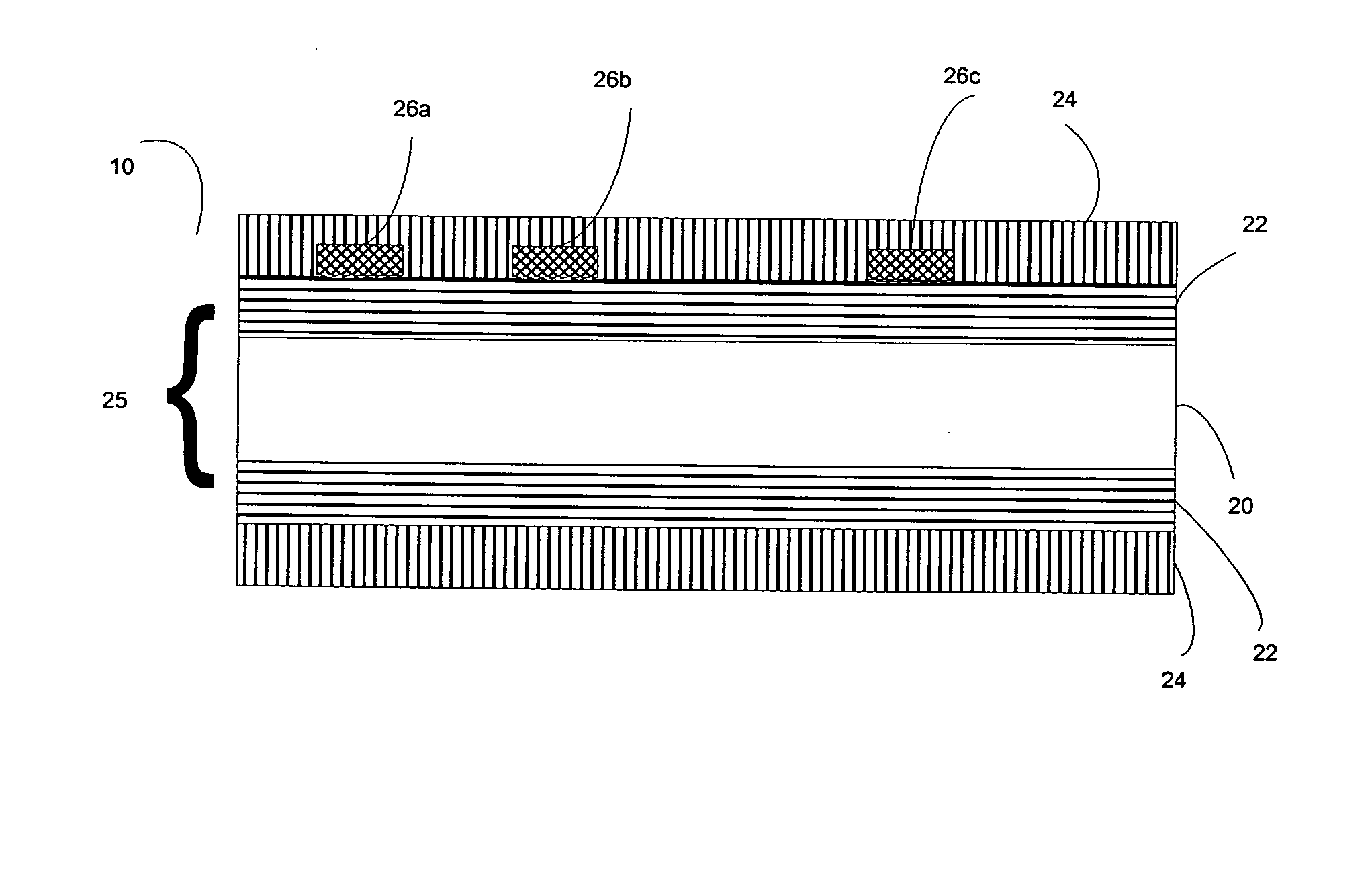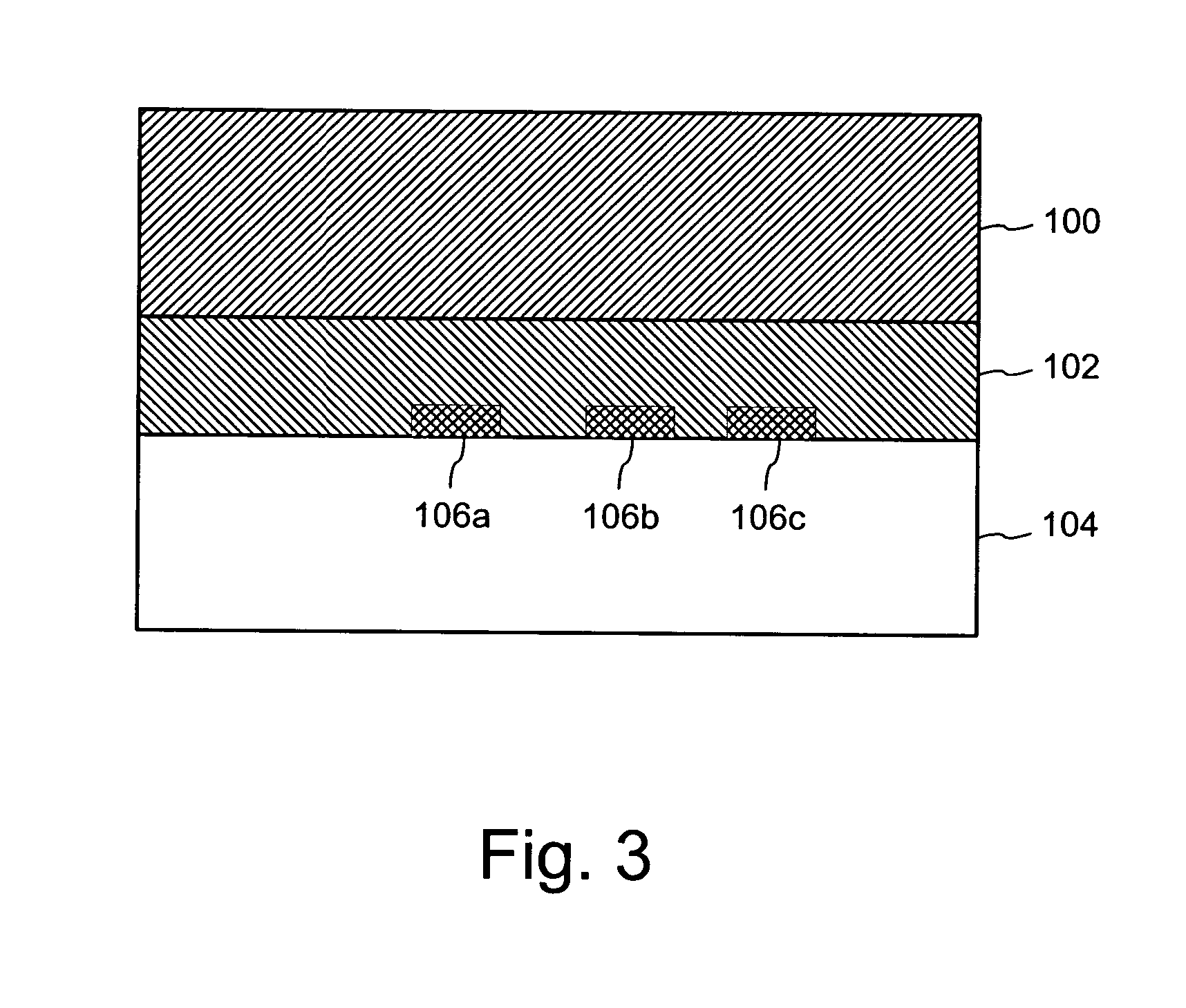Document laminate formed from different polyester materials
a technology of polyester materials and laminates, applied in the field of document laminates, can solve the problems of document failure in the field, damage to the entire document, and difficulty in removal of laminates, and achieve the effect of removing the adverse effect of heat and humidity
- Summary
- Abstract
- Description
- Claims
- Application Information
AI Technical Summary
Benefits of technology
Problems solved by technology
Method used
Image
Examples
Embodiment Construction
Terminology
[0030] In the foregoing discussion, the use of the word “ID document” is broadly defined and intended to include all types of ID documents, including (but not limited to), documents, magnetic disks, credit cards, bank cards, phone cards, stored value cards, prepaid cards, smart cards (e.g., cards that include one more semiconductor chips, such as memory devices, microprocessors, and microcontrollers), contact cards, contactless cards, proximity cards (e.g., radio frequency (RFID) cards), passports, driver's licenses, network access cards, employee badges, debit cards, security cards, visas, immigration documentation, national ID cards, citizenship cards, social security cards, security badges, certificates, identification cards or documents, voter registration and / or identification cards, police ID cards, border crossing cards, security clearance badges and cards, legal instruments, gun permits, badges, gift certificates or cards, membership cards or badges, and tags. A...
PUM
| Property | Measurement | Unit |
|---|---|---|
| Electrical resistance | aaaaa | aaaaa |
| Durability | aaaaa | aaaaa |
Abstract
Description
Claims
Application Information
 Login to View More
Login to View More - R&D
- Intellectual Property
- Life Sciences
- Materials
- Tech Scout
- Unparalleled Data Quality
- Higher Quality Content
- 60% Fewer Hallucinations
Browse by: Latest US Patents, China's latest patents, Technical Efficacy Thesaurus, Application Domain, Technology Topic, Popular Technical Reports.
© 2025 PatSnap. All rights reserved.Legal|Privacy policy|Modern Slavery Act Transparency Statement|Sitemap|About US| Contact US: help@patsnap.com



